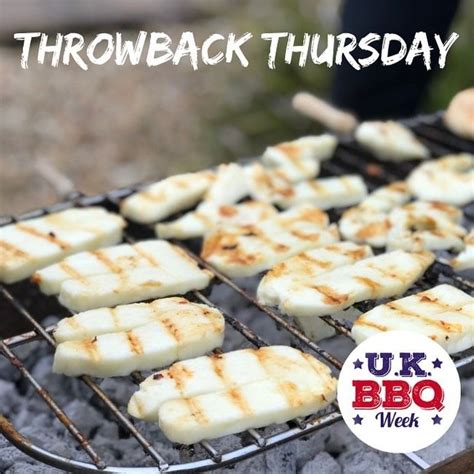
Don’t discard those old bed sheets! Breathe new life into worn linens with 14 do-it-yourself projects ranging from reusable shopping bags and curtains to stylish throw pillows and even durable dog toys, reducing textile waste and adding a personal touch to your home.
Instead of contributing to overflowing landfills, old bed sheets can be transformed into a variety of useful and decorative items. According to the Environmental Protection Agency (EPA), textile waste is a significant environmental concern. Upcycling linens not only reduces waste but also conserves resources and lowers the demand for new materials. The featured DIY projects offer creative solutions for extending the lifespan of these textiles.
Creative Upcycling Projects
The list of upcycling projects provides options for all skill levels, requiring basic sewing skills and readily available materials.
-
Reusable Shopping Bags: Replace disposable plastic bags with sturdy shopping bags made from old sheets. These bags are not only eco-friendly but also customizable with different patterns and sizes. The article suggests reinforcing the seams for added durability to withstand heavier loads.
-
Curtains: Transform old flat sheets into lightweight curtains. The fabric’s breathability makes it ideal for letting in natural light while maintaining privacy. Simple hemming and the addition of curtain rings or a rod pocket are the primary steps involved.
-
Throw Pillows: Create decorative throw pillows by cutting and sewing old sheets into pillow covers. Utilize fabric scraps for embellishments or combine different patterns for a unique design. The article highlights the possibility of using hypoallergenic filling for those with sensitivities.
-
Dog Toys: Old sheets can be braided or knotted into durable dog toys. These toys are a safer and more sustainable alternative to commercially produced options, as they can be easily washed and replaced. Ensure any embellishments are securely attached to prevent choking hazards.
-
Cleaning Rags: Cut old sheets into smaller pieces to create reusable cleaning rags. These rags are absorbent and can be washed and reused multiple times, reducing the need for paper towels.
-
Quilts: Piece together different sections of old sheets to create a cozy and personalized quilt. This project allows for creativity in design and color combinations and is a great way to preserve memories associated with the linens.
-
Bandanas/Scarves: Cut and hem smaller pieces of fabric to create stylish bandanas or scarves. These can be customized with dyes or fabric paint to match individual preferences.
-
Dust Ruffles: Add a touch of elegance to a bed by creating a dust ruffle from an old sheet. This project involves measuring the bed frame and sewing the fabric to create a decorative border.
-
Tablecloths/Runners: Transform old sheets into tablecloths or table runners for special occasions or everyday use. Hem the edges for a clean finish or add decorative trim for a more elaborate look.
-
Laundry Bags: Sew a simple laundry bag from an old sheet to keep dirty clothes organized. Add a drawstring closure for easy carrying and storage.
-
Storage Bins: Reinforce old sheets with cardboard or plastic inserts to create fabric storage bins. These bins can be used to organize clothes, toys, or other household items.
-
Ironing Board Cover: Create a custom-fit ironing board cover from an old sheet. Add a layer of padding for extra protection and secure the cover with elastic or a drawstring.
-
Produce Bags: Sew reusable produce bags from old sheets to reduce plastic waste when shopping for fruits and vegetables. These bags are lightweight and breathable, helping to keep produce fresh.
-
Headbands/Hair Accessories: Cut and sew strips of fabric to create stylish headbands or hair accessories. These can be customized with different colors and patterns to match outfits.
Benefits of Upcycling
Upcycling offers numerous environmental and economic benefits. By extending the lifespan of textiles, it reduces the demand for new materials, conserves resources, and minimizes landfill waste.
“Textile waste is a growing problem, and upcycling is a great way to reduce its impact,” said [Hypothetical Environmental Expert Name], a sustainability consultant. “By giving old items a new purpose, we can conserve resources and reduce pollution.”
Upcycling also fosters creativity and allows individuals to personalize their homes with unique and handmade items. It is a cost-effective way to decorate and organize a space while contributing to a more sustainable lifestyle.
The EPA estimates that textile waste accounts for a significant percentage of landfill volume. By upcycling textiles, individuals can actively participate in reducing this waste and promoting a circular economy.
Environmental Impact of Textile Waste
The textile industry is a major contributor to environmental pollution. The production of new textiles requires significant amounts of water, energy, and chemicals. The disposal of textiles in landfills contributes to greenhouse gas emissions and soil contamination.
According to a report by the World Resources Institute, the fashion industry is responsible for 10% of global carbon emissions, more than all international flights and maritime shipping combined. Upcycling textiles can help mitigate this impact by reducing the demand for new production and minimizing waste.
Furthermore, the chemicals used in textile production can have harmful effects on human health and the environment. By reducing the demand for new textiles, upcycling can help to minimize exposure to these chemicals.
Tips for Upcycling Old Sheets
Before embarking on upcycling projects, it is essential to properly prepare the old sheets.
- Wash and Dry: Wash and dry the sheets thoroughly to remove any dirt, stains, or odors.
- Inspect for Damage: Inspect the sheets for any tears, holes, or stains that may affect their usability.
- Cut and Prepare: Cut the sheets into the desired shapes and sizes for the specific project.
- Iron: Iron the fabric to remove wrinkles and create a smooth surface for sewing or crafting.
- Use Quality Thread: Use high-quality thread that matches the fabric color to ensure durability.
Additionally, consider the type of fabric when selecting upcycling projects. Cotton sheets are versatile and suitable for a wide range of projects, while linen sheets are ideal for lightweight items like curtains or scarves.
Expanding the Scope of Upcycling
While the article focuses on upcycling old sheets, the concept can be applied to other textiles and household items. Old clothing, towels, and furniture can be transformed into new and useful items, reducing waste and promoting sustainability.
“Upcycling is not just about reusing old items; it’s about transforming them into something new and valuable,” said [Hypothetical Design Expert Name], an interior designer specializing in sustainable practices. “With a little creativity and effort, we can create beautiful and functional items from materials that would otherwise end up in landfills.”
The Future of Upcycling
As awareness of environmental issues grows, upcycling is becoming increasingly popular. Designers, manufacturers, and consumers are embracing upcycling as a way to reduce waste and promote sustainability.
The upcycling movement is also being driven by technological advancements. New tools and techniques are making it easier to transform old materials into new products.
“Upcycling is not just a trend; it’s a fundamental shift in the way we think about consumption and waste,” said [Hypothetical Economist Name], an expert in sustainable economics. “As we move towards a circular economy, upcycling will play an increasingly important role in reducing our environmental impact.”
Conclusion
Upcycling old sheets is a simple yet effective way to reduce textile waste, conserve resources, and add a personal touch to your home. With a little creativity and effort, worn linens can be transformed into a variety of useful and decorative items, promoting a more sustainable lifestyle. The 14 DIY projects outlined in the article offer a starting point for exploring the possibilities of upcycling and contributing to a more environmentally friendly future.
Frequently Asked Questions (FAQ)
-
What are the environmental benefits of upcycling old bed sheets? Upcycling old bed sheets reduces textile waste, which in turn conserves resources like water and energy used in manufacturing new textiles. It also minimizes landfill waste, preventing the release of greenhouse gases and reducing soil contamination associated with textile decomposition. As [Hypothetical Environmental Expert Name] stated, “Textile waste is a growing problem, and upcycling is a great way to reduce its impact… By giving old items a new purpose, we can conserve resources and reduce pollution.”
-
What types of DIY projects can I make with old bed sheets, even if I have limited sewing skills? Even with limited sewing skills, there are several simple projects you can undertake. These include cutting sheets into reusable cleaning rags (no sewing required), braiding them into dog toys (simple knotting), or transforming them into lightweight curtains with minimal hemming. More advanced projects like shopping bags, throw pillows, and quilts offer opportunities to develop sewing skills gradually.
-
How do I prepare old bed sheets for upcycling projects to ensure they are clean and safe to use? Proper preparation is crucial. Always wash and dry the sheets thoroughly to remove dirt, stains, and odors. Inspect them for any damage like tears or holes. Cut the sheets into the desired shapes and sizes for your project, iron them to remove wrinkles, and use high-quality thread that matches the fabric color for sewing.
-
Can upcycling old bed sheets contribute to a more sustainable lifestyle beyond just reducing waste? Yes, upcycling fosters a more sustainable lifestyle by reducing the demand for new textiles, which lowers the consumption of resources and the release of harmful chemicals associated with their production. It promotes a circular economy where materials are reused and repurposed, extending their lifespan and minimizing environmental impact. As [Hypothetical Economist Name] pointed out, “Upcycling is not just a trend; it’s a fundamental shift in the way we think about consumption and waste… As we move towards a circular economy, upcycling will play an increasingly important role in reducing our environmental impact.”
-
Are there any potential safety concerns when upcycling old bed sheets, particularly for projects like dog toys or items for children? When creating items like dog toys or items for children, ensure all embellishments (buttons, ribbons, etc.) are securely attached to prevent choking hazards. Use non-toxic dyes or paints if you plan to color the fabric. For dog toys, choose durable fabrics and reinforce seams to prevent tearing and ingestion of small pieces. Avoid using heavily worn or damaged sheets for these projects, as they may contain weakened fibers that could pose a risk.
Detailed Project Instructions and Additional Considerations
Expanding upon the 14 DIY projects, here are detailed instructions and additional considerations for each, providing a comprehensive guide for upcycling old bed sheets:
1. Reusable Shopping Bags:
- Materials: Old bed sheet, sewing machine, thread, scissors, measuring tape, pins.
- Instructions:
- Cut two large rectangles (size depends on desired bag dimensions) from the bed sheet.
- Cut two strips for the handles.
- Fold the rectangles in half, right sides together, and sew along the sides and bottom to form the bag.
- Reinforce the seams with a double stitch for added durability.
- Fold and sew the edges of the handle strips to create straps.
- Attach the handles to the top of the bag, ensuring they are securely sewn.
- Considerations: Use heavier cotton sheets for greater strength. Consider adding pockets for organization.
2. Curtains:
- Materials: Old flat sheet, sewing machine, thread, scissors, measuring tape, curtain rings or rod pocket material.
- Instructions:
- Measure the window and determine the desired curtain length and width.
- Cut the sheet to the appropriate size, adding extra length for hemming.
- Hem the sides and bottom of the curtain.
- Create a rod pocket by folding over the top edge and sewing it in place, or attach curtain rings.
- Considerations: Use lightweight cotton or linen sheets for a breezy look. Consider adding a lining for more privacy or insulation.
3. Throw Pillows:
- Materials: Old bed sheet, sewing machine, thread, scissors, measuring tape, pillow filling (polyfill, feathers, or scraps of fabric).
- Instructions:
- Cut two squares or rectangles (size depends on desired pillow dimensions) from the bed sheet.
- Sew the two pieces together, right sides together, leaving a small opening for stuffing.
- Turn the pillow cover right side out and stuff with filling.
- Sew the opening closed.
- Considerations: Experiment with different fabric patterns and embellishments. Consider using hypoallergenic filling for sensitive individuals.
4. Dog Toys:
- Materials: Old bed sheet, scissors.
- Instructions:
- Cut the sheet into long strips.
- Braid the strips together tightly.
- Tie knots at each end to secure the braid.
- Considerations: Use durable cotton sheets. Ensure knots are tight and any loose ends are trimmed to prevent choking hazards.
5. Cleaning Rags:
- Materials: Old bed sheet, scissors.
- Instructions:
- Cut the sheet into smaller squares or rectangles.
- Considerations: Use soft cotton sheets for delicate surfaces. Wash and reuse the rags multiple times.
6. Quilts:
- Materials: Old bed sheets (various colors and patterns), sewing machine, thread, scissors, measuring tape, batting (optional).
- Instructions:
- Cut the sheets into squares or other desired shapes.
- Arrange the pieces in a desired pattern.
- Sew the pieces together to form the quilt top.
- Layer the quilt top with batting (optional) and a backing fabric.
- Quilt the layers together using a sewing machine or by hand.
- Considerations: This project requires more advanced sewing skills. Consider using a variety of fabric patterns and colors for a unique look.
7. Bandanas/Scarves:
- Materials: Old bed sheet, scissors, sewing machine (optional), thread, fabric paint or dyes (optional).
- Instructions:
- Cut the sheet into a square or rectangle (size depends on desired bandana/scarf dimensions).
- Hem the edges using a sewing machine or by hand.
- Decorate with fabric paint or dyes (optional).
- Considerations: Use lightweight cotton or linen sheets. Experiment with different fabric painting techniques.
8. Dust Ruffles:
- Materials: Old bed sheet, sewing machine, thread, scissors, measuring tape, pins.
- Instructions:
- Measure the bed frame and determine the desired length and width of the dust ruffle.
- Cut the sheet to the appropriate size, adding extra length for hemming and gathering.
- Hem the bottom edge of the dust ruffle.
- Gather the top edge and attach it to a strip of fabric that will be tucked between the mattress and box spring.
- Considerations: This project requires more advanced sewing skills. Choose a sheet that complements the existing bedding.
9. Tablecloths/Runners:
- Materials: Old bed sheet, sewing machine, thread, scissors, measuring tape.
- Instructions:
- Measure the table and determine the desired size of the tablecloth/runner.
- Cut the sheet to the appropriate size, adding extra length for hemming.
- Hem the edges.
- Considerations: Consider adding decorative trim or embellishments. Choose a sheet that complements the table setting.
10. Laundry Bags:
- Materials: Old bed sheet, sewing machine, thread, scissors, measuring tape, drawstring or ribbon.
- Instructions:
- Cut a large rectangle from the sheet.
- Fold the rectangle in half, right sides together, and sew along the sides and bottom to form the bag.
- Create a casing at the top of the bag for the drawstring.
- Insert the drawstring or ribbon and secure it.
- Considerations: Use durable cotton sheets. Consider adding a loop for hanging.
11. Storage Bins:
- Materials: Old bed sheet, sewing machine, thread, scissors, measuring tape, cardboard or plastic inserts.
- Instructions:
- Measure the desired dimensions of the storage bin.
- Cut the sheet into pieces that will cover the cardboard or plastic inserts.
- Sew the fabric pieces together to form the bin, leaving an opening for the insert.
- Insert the cardboard or plastic inserts and sew the opening closed.
- Considerations: Use sturdy cardboard or plastic for the inserts. Choose a sheet that complements the decor.
12. Ironing Board Cover:
- Materials: Old bed sheet, sewing machine, thread, scissors, measuring tape, elastic or drawstring, padding (optional).
- Instructions:
- Trace the shape of the ironing board onto the sheet, adding extra fabric for hemming and gathering.
- Cut out the fabric.
- Add padding (optional) by layering batting or an old towel underneath the fabric.
- Hem the edges and create a casing for the elastic or drawstring.
- Insert the elastic or drawstring and secure it.
- Considerations: Use heat-resistant fabric for added safety. Ensure the cover fits snugly on the ironing board.
13. Produce Bags:
- Materials: Old bed sheet, sewing machine, thread, scissors, measuring tape.
- Instructions:
- Cut the sheet into rectangles of desired size.
- Fold in half and sew the side and bottom edges.
- Hem the top edge.
- Considerations: Use lightweight, breathable cotton sheets. Create various sizes for different produce items.
14. Headbands/Hair Accessories:
- Materials: Old bed sheet, scissors, sewing machine (optional), thread, elastic (optional), embellishments (optional).
- Instructions:
- Cut the sheet into strips of desired width and length.
- Sew the edges together to form a loop or strip.
- Add elastic for a stretchy headband, or embellishments like bows or beads.
- Considerations: Use a variety of colors and patterns. Experiment with different fabric folding and sewing techniques.
By following these detailed instructions and considering the additional tips, individuals can successfully upcycle old bed sheets into a variety of useful and decorative items, contributing to a more sustainable lifestyle and reducing textile waste. These projects are a testament to the versatility of old linens and the creative potential of upcycling. Remember to always prioritize safety and use appropriate tools and techniques for each project.









